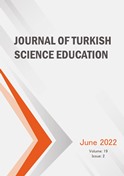Physics Education: Systematic Mapping of Educational Innovation Articles
Keywords:
Physics education, educational innovation, systematic mappingAbstract
This article presents a systematic mapping review on educational innovation in the area of physics education. We identified 508 articles published in journals from 2015 to 2019 from the Web of Science and Scopus databases. We found that research in educational innovation in the teaching of physics has focused on the analysis of didactic proposals and their evaluation. The analysis reveals areas of opportunity for the area of educational management, where we found some of the most cited articles, as well as for the study of innovative extracurricular activities related to the teaching of physics. There is an inconsistency between the large proportion of articles focused on teacher education and the absence of this kind of study at the basic levels. In general, the study of educational innovation in physics takes place at the high-school and university levels. The mapping provides information that supports researchers, professors and managers interested in educational innovation.
